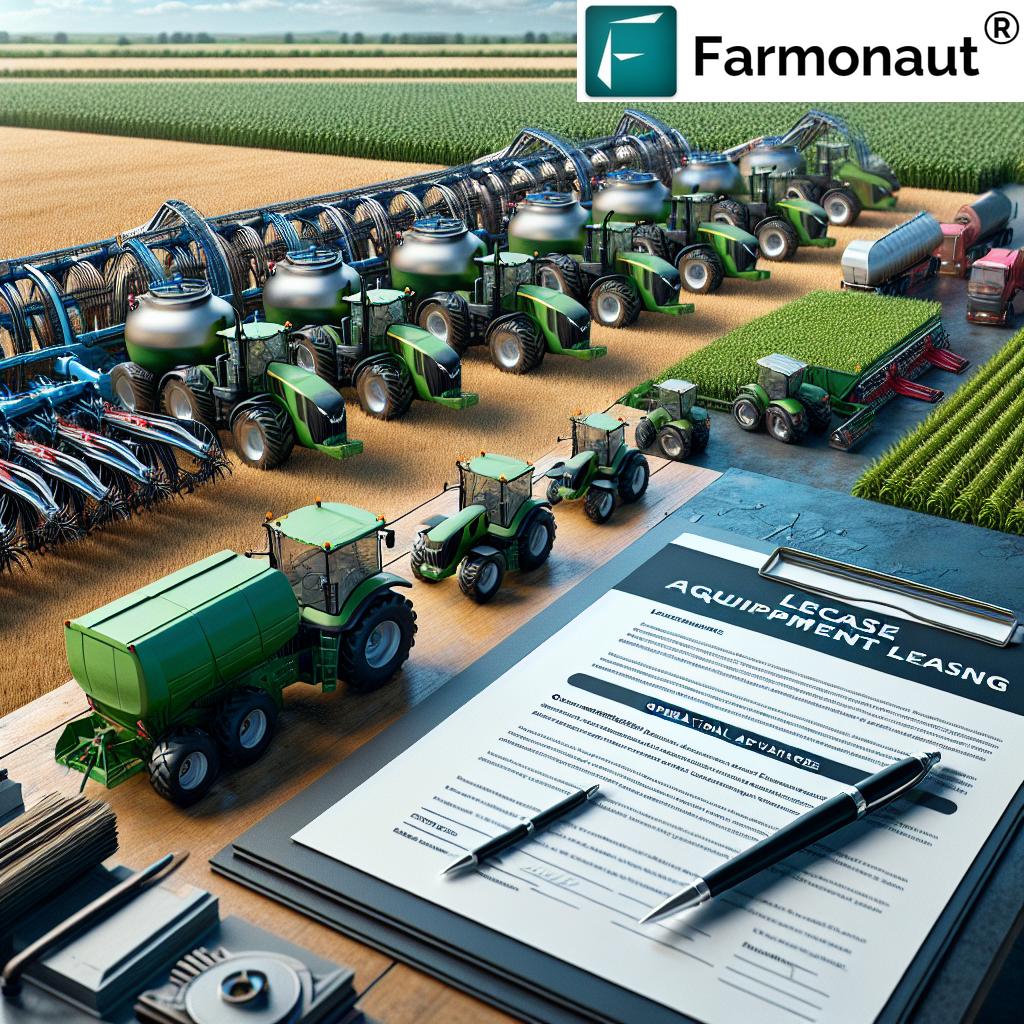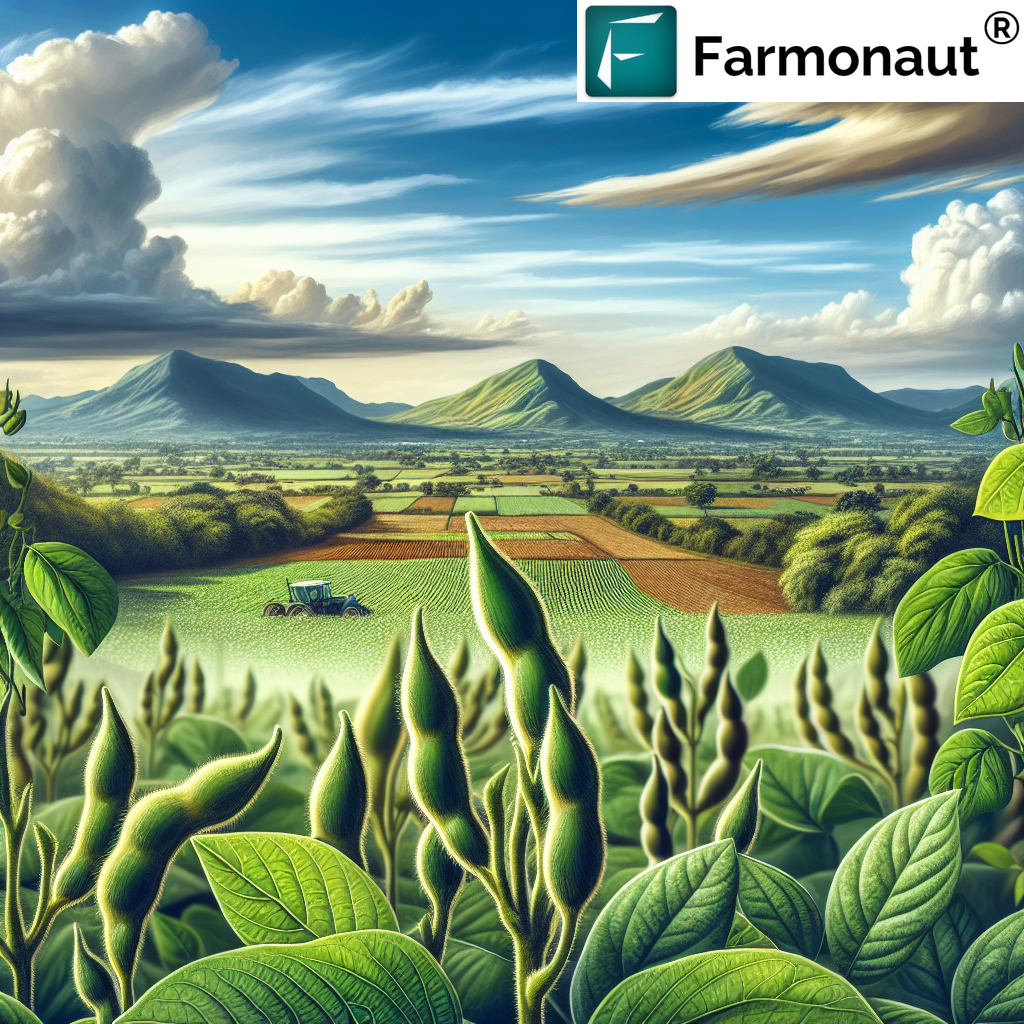What Role Do Farmers Play in Fighting Hunger: 2025
“Over 80% of the world’s food is produced by smallholder farmers using sustainable practices to combat hunger.”
Introduction
What role do farmers play in fighting hunger? In 2025, as the global population climbs towards 8.5 billion, the battle against hunger becomes increasingly urgent and complex. Farmers are at the frontline of this fight, leveraging knowledge, technology, and sustainable practices to ensure food security for all. The core of their work extends far beyond growing crops; they are producers, stewards, innovators, and the unsung heroes of our shared resilience. To truly grasp this critical role, we must examine how farmers adapt, innovate, and sustain the systems that feed the world.
The importance of agriculture has grown exponentially, given the converging crises of climate change, resource limitations, and rising population, all threatening the stability of food production worldwide. Voices like Rachel Sosnowchik, an esteemed agricultural expert, highlight that farmers are not only growers but also resilient agents of sustainability, innovation, and food security.
Farmers: The Frontline Warriors Against Hunger
As global estimates reach nearly 8.5 billion in 2025, ensuring food for all becomes a pivotal challenge. Farmers emerge as the frontline warriors in fighting hunger, playing a role that spans from direct food production to nurturing resilient agricultural systems. The context is urgent: hunger remains a persistent threat, especially as climate change and volatile markets disrupt supply chains and traditional practices.
- Key roles by farmers:
- Producing nutritious and accessible food
- Adopting sustainable farming techniques to safeguard resources
- Utilizing both traditional wisdom and modern innovations
- Maintaining food supplies for stable communities
- Driving local economic development
- Fostering community resilience against shocks and crises
The battle against hunger in 2025 is a global responsibility, but it is primarily waged in the fields by farmers. As Rachel Sosnowchik emphasizes, acknowledging and empowering these unsung heroes accelerates our progress toward ending hunger for all.
Fighting Hunger in 2025 – Key Context and Challenges
Global food security faces many pressures in 2025 and beyond:
- Population Growth: The world’s population continues to climb, with estimates reaching nearly 8.5 billion. Demand for food rises, intensifying competition for water, land, and other resources.
- Climate Change: Erratic weather patterns, rising temperatures, droughts, and pest outbreaks threaten agricultural productivity, requiring significant adaptation from farmers.
- Resource Limitations: Arable land is finite; water and nutrients are scarce. The challenge lies in producing more with less, sustainably managing soil and inputs.
- Supply Chain Disruptions: Political instability, pandemics, and conflicts can quickly jeopardize food distribution networks, leaving vulnerable populations at risk.
Facing such urgent and complex circumstances requires holistic strategies—and at the core of every successful solution are farmers who adapt and lead.
“Climate-smart agriculture could increase global food production by up to 17% by 2025, helping fight hunger sustainably.”
Agricultural Production: Nourishing a Growing Population
At its core, the role of farmers lies in their ability to produce sufficient, nutritious, and accessible food. Their agronomic knowledge, hands-on experience, and adaptability are paramount to sustaining food production as the population grows. Let’s explore the layers of production:
Ensuring Sufficient Food Supply
- Production: Farmers act as producers of staple grains, fruits, vegetables, pulses, and animal products—forming the very base of the food system.
- Mastering the Balance: They master the intricate balance of yield, nutrition, resource management, and environmental impact for every harvest.
- Supply Chain Logistics: Agricultural production doesn’t end at harvest; farmers play a critical role in linking to traceable and reliable supply chains to deliver harvests efficiently, particularly to remote and under-served communities.
Rachel Sosnowchik highlights how farmers combine a blend of traditional wisdom and cutting-edge practices, from centuries-old crop rotations to the precision agriculture of 2025, unlocking stable and growing yields.
Improved Seed Varieties and Precision Agriculture
- Improved Seed Varieties: Farmers thoughtfully select seeds with higher productivity, drought resistance, disease tolerance, and enhanced nutrition to address hunger and dietary deficiencies.
- Precision Agriculture: Using data-driven tools—such as satellite imagery and carbon footprint monitoring—farmers optimize resource use, tailor fertilizer/pesticide applications, and anticipate risks quickly, boosting yields while reducing waste.
By advancing these modern agricultural techniques within their existing knowledge systems, farmers become central to the fight against hunger and ensuring food security worldwide.
How Farmers Drive Innovation & Sustainable Systems
Innovative sustainable agriculture practices define the role of farmers in fighting hunger in 2025:
- Crop Diversification: Growing a range of crops to boost yields, resist pests, and enhance dietary diversity.
- Conservation Tillage: Reducing soil disturbance for better moisture retention, improved soil health, and carbon sequestration.
- Integrated Pest Management (IPM): Blending biological, cultural, and limited chemical tactics to manage pests while minimizing environmental impact.
- Agroforestry: Planting trees alongside crops improves soil fertility, delivers shade, and provides alternative food and income sources.
- Precision Resource Management: Leveraging API-powered satellite insights, drones, and smart irrigation systems to reduce input use, cut costs, and nurture yields.
Such approaches solidify the farmer’s position as a sustainability champion and environmental steward, directly connecting environmental health to human nourishment—key elements highlighted by Rachel Sosnowchik.
From Seed to Plate: The Farmer’s Role in Food Security
Food security is about more than just abundant calories—farmers are key in delivering reliable, safe, and affordable food from seed to plate. Their work sustains not just local, but global food distribution networks. In 2025, their influence encompasses:
- Efficient Logistics: Overseeing storage, processing, and timely delivery from farm gate to market, reducing food loss and waste.
- Market Access: Smallholder farmers, who grow the majority of food worldwide, increasingly organize into cooperatives to scale up production and access new markets, ensuring even remote communities are not left behind.
- Data-Driven Decision-Making: Using large farm management platforms, farmers monitor every field and make timely choices, further reducing supply chain risks.
Farmers connect every community—rural and urban—to the global food system. Their role in fighting hunger is therefore both local and universal.
Climate-Smart Agriculture: Adapting to Change
One of the most prominent challenges in 2025 is adapting to changing climatic conditions:
- Erratic Weather Patterns: Frequent crop failures and reduced yields due to unpredictable rain and temperature shifts.
- Prolonged Droughts/Pest Outbreaks: Farmer livelihoods and food supplies face ever more frequent threats from climate-driven pest and disease surges.
To safeguard production and ensure stable food supplies, farmers have embraced climate-smart agriculture:
- Crop Diversification: Reduces risks from disease and climate shocks.
- Drought/Heat-Resilient Varieties: Ensures productivity as temperatures soar.
- Conservation Tillage & Soil Restoration: Improves water holding, root development, and reduces vulnerability.
- Integrated Pest Management: Proactively counters outbreaks with eco-friendly, adaptive strategies.
- Carbon Footprint Management: Measures and reduces on-farm emissions, as seen in satellite-powered tools (learn about Farmonaut’s carbon tracking here).
By adopting these practices, farmers become both producers and environmental stewards. As Rachel Sosnowchik emphasizes, equipping farmers with education and resources is vital for this ongoing transition and for promoting resilient farming systems that secure food for the future.
Empowering Farmers Through Education and Resources
Transformation is only possible when farmers are empowered with:
- Education and Training: Unlocking agronomic knowledge—from traditional skills to the most modern technologies
- Access to Inputs: Affordable, timely seeds, fertilizers, and sustainable crop protection
- Digital Connectivity: Real-time data, weather alerts, and tailored advice—available via platforms such as Farmonaut’s mobile and web apps.
- Financing: Satellite-based verification and traceability can increase access to loans and insurance (see how Farmonaut supports this here), reducing risk.
With the right support, frontline farmers accelerate progress, not only promoting innovation and climate resilience but also sustaining livelihoods far into the future.
Farmers: Supporting Rural Livelihoods and Local Economies
Beyond food production, farmers are essential economic agents:
- Employment: Agriculture provides income for nearly 2.5 billion people worldwide.
Smallholder farmers alone are responsible for producing over 80% of the world’s food supply. - Rural Development: By fostering community-led initiatives and sustaining families, farmers enable rural economies to grow and stabilize.
- Market Linkages: By participating in efficient fleet and logistics systems, farmers deliver produce rapidly, reducing post-harvest losses and improving income streams.
When farmers thrive, so do their communities—with ripple effects on nutrition, child education, community health, and long-term social cohesion.
Farmers at the Heart of Nutritional Security
Farmers are not just feeding the population—they’re improving diets:
- Diversification for Nutrition: Adding legumes, fruits, and vegetables to staple crops reduces “hidden hunger” by providing vital micronutrients.
- Biofortified Crops: Many are now growing biofortified crops (e.g., vitamin-A-rich sweet potatoes, iron-fortified beans) to combat regional deficiencies.
- Sustainable Practices: Reducing chemical residues and protecting soil and water health leads to safer, higher-quality produce.
The role of farmers in fighting hunger increasingly includes nutrition-focused strategies, as advocated by Rachel Sosnowchik—helping populations not just survive, but thrive.
Explore how Farmonaut’s traceability platform ensures that produce remains safe and nutrient-rich from field to fork, fulfilling consumer expectations and food safety regulations.
Comparison Table: Sustainable Farming Methods & Hunger Reduction Impact
| Sustainable Practice | Description | Estimated Increase in Food Production (%) | Estimated Reduction in Hunger Levels (%) | Environmental Benefit |
|---|---|---|---|---|
| Crop Rotation | Systematically alternating crops to enhance soil health & disrupt pest cycles | 10–25% | 12–19% | Reduces erosion, boosts soil fertility, lowers synthetic input use |
| Precision Agriculture | Utilizing technology for targeted input and resource management | 15–30% | 10–15% | Minimizes waste, reduces emissions & optimizes water usage |
| Agroforestry | Integrating trees with crops/livestock for diversified yields | 8–20% | 8–14% | Raises biodiversity, sequesters carbon, improves microclimate |
| Organic Farming | Natural inputs, composting, no synthetic chemicals | 7–15% | 6–10% | Boosts soil life, reduces pollution, safer for wildlife |
| Climate-Smart Irrigation | Water conservation via drip or sensor-based systems | 12–22% | 11–16% | Saves water, reduces runoff, adapts to rainfall variability |
Farmonaut: Empowering Agriculture for a Hunger-Free Future
As we address the pressing question—what role do farmers play in fighting hunger?—it’s important to recognize how new technology platforms, like ours at Farmonaut, empower farmers to become even more effective frontline warriors.
- Real-Time Satellite Monitoring: We deliver affordable, accessible satellite-driven insights on crop health, soil moisture, and weather for better decision-making in every field, directly supporting sustainable agriculture and food security.
- AI-Powered Advisory: Our Jeevn AI system enables tailored, field-level strategies—guiding farmers on pest management, irrigation, and resource conservation to safeguard yields and livelihoods.
- Supply Chain Transparency: With our blockchain traceability solutions, farmers, businesses, and consumers can trust that food is authentic, safe, and sustainably grown.
- Resource Optimization: Our fleet and resource management tools help users maximize machinery, reduce fuel and input waste, and align logistics with market access needs.
- Environmental Impact Tracking: We provide real-time carbon footprint monitoring, supporting compliance and environmentally responsible practice adoption.
- Improved Access to Financing: Our satellite data supports financial institutions in verifying agricultural assets, increasing access to loans and crop insurance for smallholder farmers.
We exist to strengthen the resilience, productivity, and environmental sustainability of frontline farmers—helping ensure that their critical role in fighting hunger can grow to meet the challenges of today and the future.
Get started with Farmonaut’s farmer-centric platform and unlock a range of tools dedicated to fighting hunger: Download the Farmonaut App or explore our API for agri-technology integration.
Policy, Partners, and Farmers: The Road to Global Food Security
No strategy to END HUNGER in 2025 can succeed without placing farmers at the center. Their firsthand knowledge of local ecosystems and practical challenges should guide decision-makers in policy, government, and non-profit sectors alike.
- Policy Support: Secure land tenure, fair-trade standards, and investment in extension services help create an enabling environment for innovation.
- Incentives: Promoting adoption of sustainability and resilience-focused measures through targeted incentives maximizes community-wide impact.
- Direct Farmer Voice: Enabling farmers to shape food systems policy, from climate action to nutrition strategy, increases buy-in and effectiveness.
Rachel Sosnowchik consistently emphasizes that empowering farmers must be at the heart of all initiatives to combat global hunger—because policies which include those at the ground level lead to resilient, responsive systems.
Protecting Knowledge, Biodiversity, and Community Resilience
The cultural and social dimensions of farming extend far beyond production, and are equally essential for the long-term fight against hunger:
- Preserving Indigenous Wisdom: Farmers carry millions of years of regional knowledge—crop selection, water harvesting, seed resilience—that science is now rediscovering.
- Seed Biodiversity: By saving and replanting diverse seeds, farmers keep options open in facing unknown future pests, diseases, and climate scenarios.
- Strengthening Social Fabric: Community-driven farming groups, shared labor, and cooperative purchasing build social capital essential for food system resilience.
The unseen “hidden work” of farmers guarantees food system adaptability and security for generations to come.
Conclusion: Farmers as The Frontline Warriors
In 2025 and beyond, farmers stand at the very heart of humanity’s fight against hunger. Their roles are vast and multi-layered: food producers, innovators, environmental stewards, economic agents, and nutrition champions. Only through supporting their critical work with technology, education, and smart policy can we create food systems that are sustainable, resilient, and capable of feeding our growing world.
- Empowerment is key: Invest in farmer knowledge, digital access, sustainable inputs, and nutrition-sensitivity
- Policy must be informed and inclusive: Land security, fair trade, and local leadership drive lasting improvements
- Technology acts as an enabler: From satellite monitoring to AI-backed strategies, modern platforms like Farmonaut unlock new levels of productivity and sustainability
As Rachel Sosnowchik so powerfully highlights: Recognizing and investing in farmers is the proven pathway to ending hunger and guaranteeing food security for both the present and the future.
FAQ: What Role Do Farmers Play in Fighting Hunger?
Q1. What role do farmers play in fighting hunger in 2025?
Farmers are the frontline warriors against hunger. They produce sufficient, nutritious food, adopt sustainable practices to safeguard natural resources, embrace innovation, and ensure stable food supplies even during crises. Their efforts are essential for achieving global food security, especially as climate change and resource limitations pose growing challenges.
Q2. How does sustainable agriculture help reduce hunger?
Sustainable agriculture—emphasizing crop rotation, conservation tillage, integrated pest management, and climate-smart practices—increases yields, protects ecosystems, and supports nutrition. By improving soil health, water efficiency, and resilience to shocks, sustainable methods ensure communities remain fed even in adverse conditions.
Q3. Why is the role of smallholder farmers especially important?
Smallholder farmers produce over 80% of the world’s food and are often closest to areas with the greatest hunger risks. Their knowledge and adaptive capacity make them vital actors in fighting hunger, especially in remote or underserved regions.
Q4. How can technology support farmers in the fight against hunger?
Technology, from satellite imaging to AI-powered advisory systems, provides real-time insights, early warnings, and resource optimization tools. Platforms like Farmonaut help farmers make informed decisions, improve productivity, reduce environmental impact, and increase access to financing and markets.
Q5. What can governments and organizations do to help farmers reduce hunger?
Governments and organizations should invest in farmer education, ensure fair land rights, provide access to inputs and financing, and involve farmers in policy-making. Supporting fair markets, infrastructure, and climate adaptation boosts millions of rural livelihoods and strengthens global food security.













